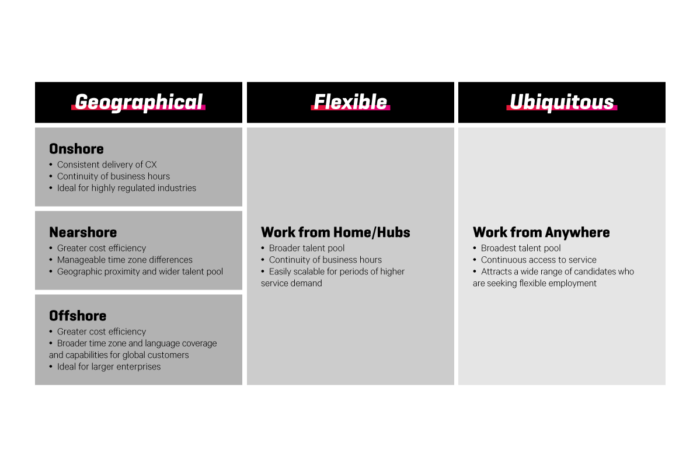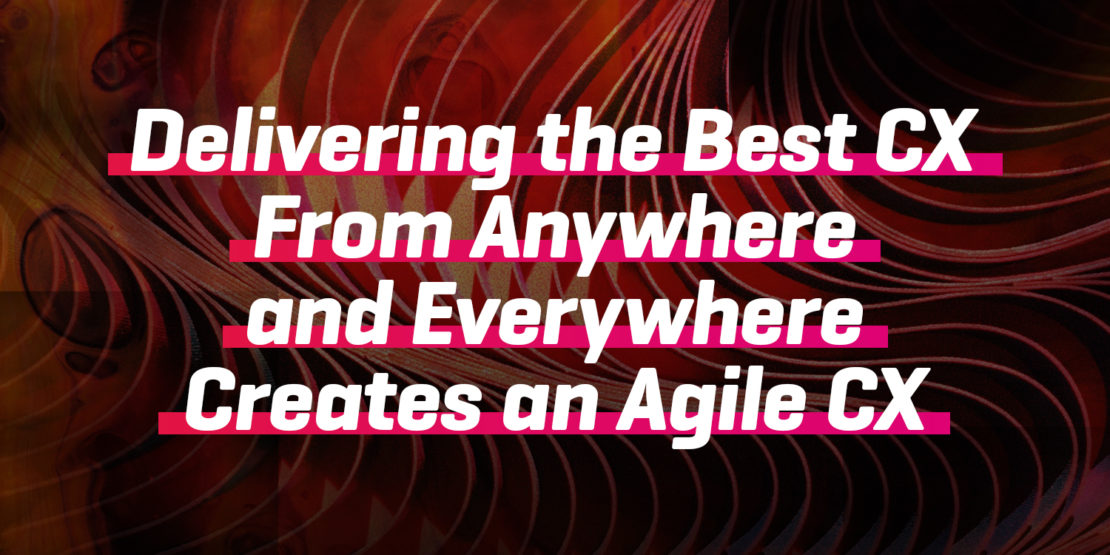As the world rapidly adapted to the changing landscape of a global pandemic, life as we knew it was transformed. From the way we travel to the way we make purchases, work and so much more, our day-to-day experiences suddenly looked different — and our interactions with others were mostly limited to what technology could provide.
Customer experience organisations were no exception to these changing circumstances. The core operating model, which largely took place in physical contact centres, temporarily halted. Yet, the acceleration of work from home solutions proved the industry’s resiliency as a result.
As contact centres were forced to close for an undetermined period of time, nearshore and offshore operations creatively adapted to provide brands with the same level of service in a work-from-home environment. Today, as many contact centres continue to operate at least partially remotely, brands can enjoy the benefits of a flexible customer service model while still providing superior levels of satisfaction to their customers.
Over these past two years, brands have uncovered the true value of flexibility and of maintaining the quality of the customer’s experience — even in an ever-changing reality. While most understand the reasons to work from home, or increasingly, from anywhere, succeeding in the future of work means adapting and fine-tuning the CX delivery model based on lessons learned during the pandemic to ensure agile and resilient operations.
How Different CX Delivery Models Work Together
As reported by Everest Group, just 6% of call centre agents operated from their homes prior to COVID-19. The necessary shift to at-home call centre operations has shifted companies’ perspectives on customer service, and as we enter a new era of CX delivery, employing a blend of CX delivery models will work to best support today’s customers.
Nearshore, onshore and offshore operations each have different functions in customer service, and the addition of work from home operations has allowed companies to further expand their CX delivery capabilities across the globe. Without geographical boundaries, at-home customer service operations can encompass different time zones, be offered in different languages and much more.
Newer methods for customer experience delivery will rely on having flexibility to personalise their CX operations beyond the traditional methods of service. The key to success in this new environment will be establishing the greatest CX needs for the organisation, and tailoring CX programs to fit — whether that consists of all at-home agents or a mixture of nearshore, onshore and offshore solutions.
Resilience Is Key to Agile CX Operations
Resilience and flexibility are crucial resources for customer service organisations, and it can lead to higher rates of customer satisfaction, long-term loyalty and stronger customer advocacy. Adopting an agile operating model contributes to an organisation’s overall resilience, as it leans on team collaboration and a greater responsiveness to the brand’s needs.
According to McKinsey, organisations who adopt an agile methodology can improve their customer satisfaction and experience by up to 30%. As part of a greater digital transformation, an agile approach shifts the focus to the customer, drives employees to work together more closely and aligns the entire organisation to a common mission.
When call centre agents operate under an agile CX delivery model, their decision making is influenced by the goal of maintaining optimal service for the customer, which can include reducing wait times, responding to issues quickly and efficiently and applying automation where necessary to deliver better CX.
Customer service teams that are united in the agile methodology also have greater insight into how they can improve, as data and analytics play a huge role in maintaining flexible operations. Under this model, approaches and processes can be adjusted in real time, as each customer interaction serves as an opportunity to learn from for future interactions.
Balancing the CX Delivery Model
Agility provides the foundation for better CX — but how can brands balance different CX delivery models to best support their customers? It’s important to understand the benefits of each type of CX delivery and how it can be applied, including onshore, nearshore and offshore operations. A work from home or work from anywhere model can act on its own or can be utilised alongside a combination of existing CX delivery models to add flexibility and create a greater competitive advantage.
Onshore outsourcing provides customer service operations that are located in the same country as the company in question, while nearshore operations provide customer service from a neighbouring country. Offshore outsourcing refers to customer service that is provided from another country entirely.
Here, we’ll take a look at the differences between and benefits of each type of CX delivery model.

Using a blend of onshore, nearshore and offshore operations, along with a work from home program, can provide customers with the widest range of service that is suited to their needs. Newer approaches and technologies in the traditional contact centre model provide companies with the ability to source more specialised talent, consistently identify opportunities to streamline and improve processes, and provide higher quality training and education to employees.
For example, Foundever hubs create an optimal solution for brands looking to combine the best elements of traditional CX delivery and work from home capabilities. At the start of the COVID-19 pandemic, our existing Work at home & hybrid delivery model allowed us to rapidly transition over 60,000 employees to a work from home environment in three weeks. hubs give remote employees the opportunity to visit a physical location where they can attend trainings and courses, as well as meet other employees.
hubs are just one example of how companies can merge elements of the traditional contact centre experience with elements that are critical to the of the future of work. As the expectations for customer service continue to grow and develop, relying on a flexible approach will be a true differentiator in providing optimal CX.
Providing Best-in-Class CX with the Right Mix of CX Delivery
There’s no doubt that the past two years have left an indelible mark on the world of customer service. And as companies continue to pivot and adjust their operations, those who maintain the same level of resilience that was established during the pandemic are set to succeed in what’s to come.
